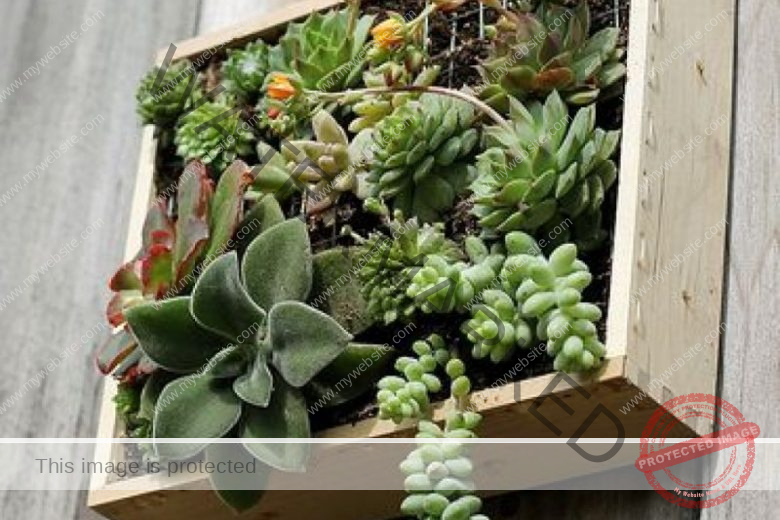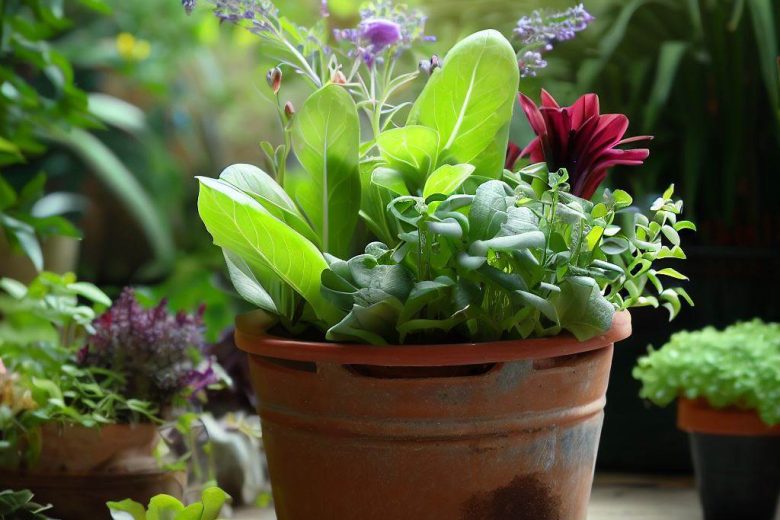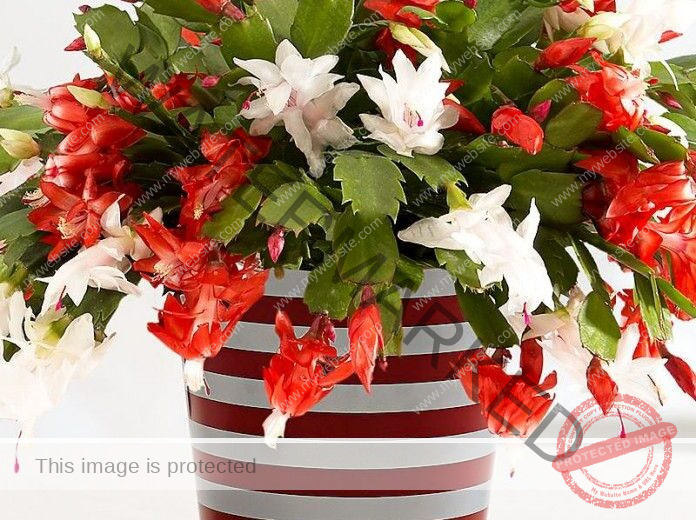Hanging succulents have emerged as a popular trend in the world of houseplants, captivating both seasoned gardeners and newcomers alike. These unique plants bring an appealing aesthetic to any indoor space, combining the practicality of low-maintenance care with the beauty of diverse, vibrant foliage. Unlike traditional potted plants, hanging succulents utilize vertical spaces, making them ideal for apartments, offices, and other environments where floor space is limited. Their versatility and easy care requirements have made them a favorite among urban dwellers and busy individuals looking to add a touch of nature to their homes.
One of the key advantages of hanging succulents is their adaptability to various indoor environments. These plants are known for their ability to store water in their leaves, allowing them to thrive in conditions where other plants might struggle. This resilience makes them an excellent choice for those who may not have a green thumb or the time to dedicate to more demanding plants. Additionally, the wide variety of succulents available means there is a perfect plant for every space and style preference, from trailing vines to compact rosettes.
Beyond their practical benefits, hanging succulents offer a unique way to enhance interior decor. They can be displayed in a myriad of creative ways, from elegant macramé hangers to modern wall-mounted planters, adding a dynamic and living element to any room. Their presence can soften the hard lines of furniture, introduce a pop of color, and create a calming atmosphere. As the trend of biophilic design continues to grow, integrating elements of nature into indoor spaces, hanging succulents are set to become an even more popular choice for home and office decor.
What is Hanging Succulents?
Benefits of Hanging Succulents
Here are some of the benefit of Hanging Succulents;
Space Efficiency
One of the primary benefits of hanging succulents is their ability to maximize space. In urban settings where living spaces are often constrained, hanging plants provide a practical solution for adding greenery without sacrificing valuable floor or surface space. By utilizing vertical areas such as walls, windows, and ceilings, hanging succulents can transform underused spaces into vibrant green zones. This makes them an excellent choice for apartments, small offices, and any other space where room is at a premium.
Aesthetic Appeal
Hanging succulents are not just functional; they are also incredibly beautiful. The wide variety of succulent species available means that there is a plant to suit every aesthetic preference. From the trailing vines of the String of Pearls to the rosette forms of Echeveria, these plants offer a myriad of shapes, colors, and textures. Hanging succulents can be used to create eye-catching displays that serve as focal points in a room. Their unique forms and vibrant colors can complement various interior design styles, from modern and minimalist to bohemian and eclectic.
Low Maintenance
Another significant advantage of hanging succulents is their low maintenance requirements. These plants are well-known for their drought tolerance, as they store water in their leaves, stems, or roots. This means they can survive with infrequent watering, making them perfect for individuals with busy lifestyles or those who travel frequently. Additionally, hanging succulents generally require less soil than traditional potted plants, which can help reduce mess and maintenance. Proper placement in well-lit areas and occasional watering are usually all that is needed to keep these plants thriving.
Air Purification
While succulents are not as well-known for their air-purifying abilities as some other houseplants, they still contribute to a healthier indoor environment. Like all plants, succulents absorb carbon dioxide and release oxygen through photosynthesis, which can help improve air quality. Some succulent species also have the ability to filter toxins from the air, contributing to a cleaner and healthier living space. Incorporating hanging succulents into your home or office can therefore offer both aesthetic and health benefits.
Types of Hanging Succulents
String of Pearls (Senecio rowleyanus)
String of Pearls is one of the most popular hanging succulents due to its unique appearance. This plant features long, trailing stems adorned with small, spherical leaves that resemble pearls. It thrives in bright, indirect light and requires minimal watering, making it an excellent choice for beginners. Its cascading vines can create a stunning visual effect when hung in a pot or planter, adding a touch of elegance to any space.
Burro’s Tail (Sedum morganianum)
Burro’s Tail, also known as Donkey’s Tail, is another favorite among hanging succulent enthusiasts. Its long, trailing stems are covered in plump, blue-green leaves that give it a distinctive, textured appearance. This plant prefers bright light and well-draining soil, and it benefits from occasional watering. Burro’s Tail is particularly well-suited to hanging baskets, where its cascading foliage can be displayed to full effect.
String of Hearts (Ceropegia woodii)
String of Hearts is a charming hanging succulent with delicate, heart-shaped leaves that grow on thin, trailing stems. This plant is known for its attractive variegated foliage, which features shades of green, silver, and purple. String of Hearts thrives in bright, indirect light and requires infrequent watering, making it easy to care for. Its romantic appearance makes it a popular choice for adding a touch of whimsy to indoor spaces.
Fish Hook Plant (Senecio radicans)
The Fish Hook Plant is named for its distinctive, hook-shaped leaves that grow on long, trailing stems. This hardy succulent is well-suited to hanging baskets and thrives in bright light. It requires minimal watering and can tolerate periods of drought, making it a low-maintenance option for indoor gardening. The unique shape of its leaves adds visual interest and can complement a variety of interior design styles.
How to Care for Hanging Succulents
Light Requirements
Hanging succulents generally thrive in bright, indirect light. Placing them near a window that receives plenty of sunlight is ideal, but it’s important to avoid direct sun exposure, which can scorch the leaves. If natural light is insufficient, especially during the winter months, supplementing with artificial grow lights can help maintain healthy growth. Each species has specific light requirements, so it’s essential to research and provide the appropriate conditions for your particular plants.
Watering Needs
One of the most common mistakes with succulents is overwatering. These plants are adapted to arid environments and store water in their leaves, stems, or roots. It’s crucial to allow the soil to dry out completely between waterings to prevent root rot. A good rule of thumb is to water thoroughly when the top inch of soil feels dry. During the growing season, succulents may require more frequent watering, while in the dormant winter months, watering should be reduced significantly.
Soil and Potting
Hanging succulents require well-draining soil to prevent waterlogging and root rot. A commercial cactus or succulent potting mix is ideal, or you can create your own by combining regular potting soil with sand, perlite, or pumice. The choice of pot is also important; containers with drainage holes are essential to allow excess water to escape. Hanging planters should be lightweight to avoid putting too much strain on the mounting hardware, and they should be securely fastened to prevent accidents.
Fertilizing
While succulents are not heavy feeders, they can benefit from occasional fertilization during the growing season. A balanced, water-soluble fertilizer diluted to half strength is usually sufficient. Fertilize every four to six weeks in the spring and summer, but avoid feeding during the winter months when the plants are dormant. Over-fertilizing can lead to excessive growth and weaken the plants, so it’s important to follow the recommended guidelines.
Creative Ways to Display Hanging Succulents
Here are some of the ways to hang your succulents;
Macramé Hangers
Macramé hangers are a popular and stylish way to display hanging succulents. These woven holders come in various designs and can be customized to fit any decor. They add a bohemian touch to indoor spaces and can be hung from ceilings, walls, or even curtain rods. The versatility of macramé hangers allows for creative arrangements and layering of multiple plants at different heights.
Wall-mounted Planters
Wall-mounted planters are another excellent option for displaying hanging succulents. These planters can be attached to walls, creating a living wall effect that adds texture and greenery to vertical spaces. They come in various materials, including metal, ceramic, and wood, allowing you to choose a style that complements your interior design. Wall-mounted planters are ideal for small spaces where floor and surface areas are limited.
Repurposed Containers
Repurposing everyday items as planters for hanging succulents can add a unique and personal touch to your decor. Items like teacups, mason jars, and even old colanders can be transformed into charming hanging planters. This approach not only adds character to your plant display but also promotes sustainability by reusing items that might otherwise be discarded. Be sure to add drainage holes to any repurposed containers to prevent waterlogging.
Hanging Terrariums
Hanging terrariums are a modern and elegant way to showcase succulents. These glass containers create a microenvironment that can highlight the beauty of your plants while protecting them from dust and drafts. Terrariums come in various shapes and sizes, from simple globes to intricate geometric designs. They can be suspended from ceilings or mounted on walls, making them a versatile and eye-catching addition to any room.
Common Issues and How to Solve Them
Overwatering
Overwatering is one of the most common issues with hanging succulents. Signs of overwatering include yellowing leaves, mushy stems, and root rot. To prevent overwatering, ensure that the soil dries out completely between waterings and always use well-draining soil and containers with drainage holes. If you notice symptoms of overwatering, reduce the frequency of watering and check the plant’s roots for signs of rot. If root rot is present, remove the affected roots and repot the plant in fresh, dry soil.
Pests
Pests such as mealybugs, spider mites, and aphids can occasionally infest hanging succulents. These pests can cause damage by sucking sap from the plants, leading to stunted growth and distorted leaves. To manage pest infestations, regularly inspect your plants and treat any affected areas with insecticidal soap or neem oil. For severe infestations, it may be necessary to isolate the affected plant and take more aggressive measures, such as using systemic insecticides.
Lack of Light
Insufficient light can cause hanging succulents to become leggy and lose their vibrant color. If your plants are not receiving enough light, they may stretch towards the nearest light source and develop elongated stems with sparse foliage. To remedy this, move the plants to a brighter location or supplement with artificial grow lights. It’s essential to provide the appropriate amount of light based on the specific needs of your succulent species.
Temperature and Humidity
Hanging succulents generally prefer warm, dry conditions similar to their natural habitats. Exposure to extreme temperatures, either too hot or too cold, can stress the plants and affect their health. Most succulents thrive in temperatures between 60°F and 80°F (15°C to 27°C). Additionally, high humidity can promote fungal diseases and rot, so it’s important to keep humidity levels moderate. Avoid placing succulents near drafts, heaters, or air conditioning vents, which can cause temperature fluctuations.
Propagation of Hanging Succulents
Leaf Cuttings
Many hanging succulents can be propagated from leaf cuttings. To do this, gently remove a healthy leaf from the parent plant, allowing the wound to callous over for a few days. Once the cut end has dried, place the leaf on top of well-draining soil and mist it lightly with water. Over time, roots will develop from the cut end, and a new plant will begin to grow. This method is simple and effective for species like String of Pearls and Burro’s Tail.
Stem Cuttings
Stem cuttings are another common method of propagating hanging succulents. Select a healthy stem and cut a segment that includes a few leaves. Allow the cut end to callous over for a few days before placing it in well-draining soil. Water the cutting sparingly until roots develop, then gradually increase watering as the new plant establishes itself. This method works well for plants like String of Hearts and Fish Hook Plant.
Offsets
Some hanging succulents produce offsets, or “pups,” which are small clones of the parent plant that grow from the base. These offsets can be separated from the parent plant and potted individually. To propagate using offsets, gently remove the pup from the parent plant, ensuring it has some roots attached. Plant the offset in well-draining soil and water it lightly until it becomes established. This method is ideal for species like Echeveria and certain types of Sedum.
Seeds
While less common, some hanging succulents can be propagated from seeds. This method requires more time and patience but can be rewarding for those looking to grow plants from scratch. Sow the seeds on the surface of well-draining soil and mist them lightly with water. Keep the soil consistently moist until the seeds germinate, then gradually reduce watering as the seedlings grow. Providing a warm, bright environment can help improve germination rates.
Other Areas that Relate to This Topic
The Role of Succulents in Biophilic Design
Biophilic design is an approach to architecture and interior design that seeks to connect people with nature by incorporating natural elements into built environments. Hanging succulents play a significant role in this trend, offering a way to introduce greenery into indoor spaces without taking up valuable floor space. The presence of plants, including succulents, has been shown to reduce stress, improve mood, and enhance overall well-being. By incorporating hanging succulents into homes and offices, individuals can create more harmonious and health-promoting environments.
The Environmental Impact of Succulent Cultivation
As the popularity of succulents has grown, so too has the demand for these plants. While succulents are generally low-maintenance and resource-efficient, it’s important to consider the environmental impact of their cultivation and transport. Many succulents are native to arid regions and may be collected unsustainably from the wild, leading to habitat destruction and population declines. To mitigate these impacts, it’s essential to source succulents from reputable nurseries that practice sustainable cultivation methods. Supporting local growers and propagating your own plants are also environmentally friendly options.
The Psychological Benefits of Indoor Gardening
Indoor gardening, including the care of hanging succulents, offers numerous psychological benefits. Engaging with plants can provide a sense of accomplishment, reduce anxiety, and promote mindfulness. The act of nurturing living things and watching them grow can be particularly rewarding and therapeutic. Hanging succulents, with their unique forms and low maintenance requirements, are an excellent choice for those looking to reap the mental health benefits of indoor gardening without the stress of high-maintenance plants.
The Future of Indoor Plant Trends
The trend of hanging succulents is part of a larger movement towards incorporating more greenery into indoor spaces. As urbanization continues and living spaces become more compact, the demand for innovative and space-efficient plant solutions is likely to grow. Future trends may include more advanced vertical gardening systems, smart planters with integrated irrigation and lighting, and an increased focus on sustainable and ethically sourced plants. Hanging succulents will likely remain a popular choice due to their versatility, beauty, and ease of care.
Conclusion
Hanging succulents have firmly established themselves as a new trend in houseplants, offering a unique combination of aesthetic appeal, space efficiency, and low maintenance. Their ability to thrive in a variety of indoor environments makes them an ideal choice for urban dwellers, busy individuals, and anyone looking to enhance their living spaces with greenery. From the delicate String of Pearls to the robust Burro’s Tail, there is a hanging succulent to suit every taste and decor style.
The benefits of hanging succulents extend beyond their beauty and practicality. They contribute to a healthier indoor environment by improving air quality and providing psychological benefits. As part of the broader trend of biophilic design, these plants help create harmonious and health-promoting spaces. However, it’s important to consider the environmental impact of succulent cultivation and choose plants from sustainable sources.
The future of indoor plant trends is likely to see continued innovation and creativity, with hanging succulents playing a prominent role. Whether displayed in macramé hangers, wall-mounted planters, or repurposed containers, these plants offer endless possibilities for transforming indoor spaces. As more people discover the joys of incorporating hanging succulents into their homes and offices, this trend is set to grow even more popular, bringing the beauty and benefits of nature into our everyday lives.




